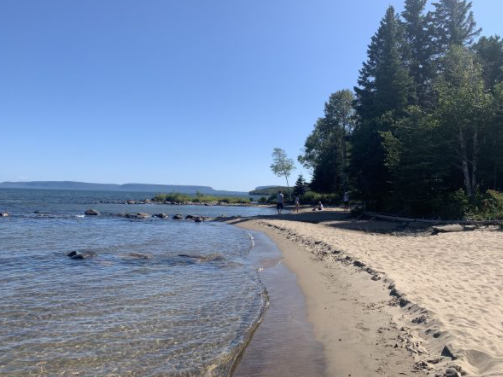THUNDER BAY — Water quality has recently improved at Thunder Bay-area beaches considered to be impaired for the past 30 years because of E.coli contamination.
An assessment of the main beach at Chippewa Park, Sandy Beach at Chippewa Park, and the Boulevard Lake main beach shows they all meet the criteria to be redesignated.
The government-funded local Remedial Action Plan (RAP) steering committee is now recommending the previous designation Beneficial Use Impairment (BUI) be replaced with Not Impaired.
An impairment of beneficial uses means a change in the chemical, physical or biological integrity sufficient to cause significant environmental degradation.
According to the International Joint Commission, there are up to 14 potential types of BUI, such as impaired habitat or impaired wildlife populations.
In the case of Thunder Bay, the impairment was beach closings caused by elevated levels of E.coli bacteria.
According to a report recently posted by InfoSuperior.com, a set of beach restoration targets that was established under RAP has now been achieved.
The prerequisites for delisting included:
1. All public beaches have identified the primary sources of fecal pollution, and pollution control plans have been developed and implemented, including:
- management of stormwater inputs
- upgrades of septic systems to provincial standards
- implementation of a management program for birds and animals
- a completion of feasible actions to improve water circulation
2. Water quality testing carried out at all public beaches on a regular, frequent and ongoing basis shows E.coli counts meeting federal and Ontario guidelines for fresh waters used for swimming and recreational activity, based on a five-year monitoring average
The report notes that the intention was to achieve as many actions as possible under criterion #1 and/or meet the target under criterion #2.
The objective of criterion #2 was met 98 per cent of the time at Chippewa's Sandy Beach, 81 per cent of the time at the main beach, and 93 per cent of the time at Boulevard Lake.
With respect to criterion #1, the report says many actions have been successfully implemented since the mid 1990s.
"Evidence shows those efforts have been successful in improving water quality as the beaches now meet the target under criterion #2. Given that water quality at all three beaches meets the provincial guideline, implementation of any further remedial action is not necessary under the RAP program," it states.
Waterfowl have been the principal source of bacterial contamination at the beaches. over the years.
The management of bird populations is outside the scope of the RAP program which has its focus on human-based sources of impairment.
The report says implementation of additional actions, such as managing waterfowl, to further continue improvements to water quality could best be addressed by ongoing efforts of the City of Thunder Bay.
The Thunder Bay District Health Unit also continues to monitor the beaches.
NOTE: A previous version of this story has been updated to clarify that there are 14 potential types of BUI rather than 14 potential causes:
- Restrictions on Fish and Wildlife Consumption
- Tainting of Fish and Wildlife Flavor
- Degradation of Fish and Wildlife Populations
- Fish Tumors or Other Deformities
- Bird or Animal Deformities or Reproduction Problems
- Degradation of Benthos
- Restrictions on Dredging Activities
- Eutrophication or Undesirable Algae
- Restrictions on Drinking Water Consumption or Taste and Odor Problems
- Beach Closings
- Degradation of Aesthetics
- Added Costs to Agriculture or Industry
- Degradation of Phytoplankton and Zooplankton Populations
- Loss of Fish and Wildlife Habitat
Source: U.S. Environmental Protection Agency
